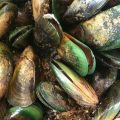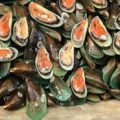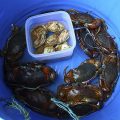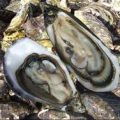The traditional method of growing green mussels in the Philippines is called the “stake” method wherein the mussel “spats” or young mussels freely attach to bamboo poles placed in the coastal areas. There is little management done and the number of mussel spats growing in the bamboo poles is not controlled resulting to poor quality mussels, which are typically small in size and contains low meat content. The “stake” method is not also sustainable because it increases sedimentation in the mussel beds, causing the culture area to become shallow. With time, the shallow culture area will no longer be suitable for growing green mussels.

In New Zealand, mussel farmers developed the longline culture system for growing green mussels. This culture system produced high quality mussels, which are exported to different countries. In 2011, New Zealand exported 101,310 metric tons of green mussels valued at NZ$216 million.
To address the need for a sustainable method of growing high quality mussels, the longline culture system used by New Zealand is adapted to suit Philippine conditions using inexpensive materials. Pinoy “Longline,” a project funded by the Philippine Council for Agriculture, Aquatic, and Natural Resources Research and Development of the Department of Science and Technology (DOST-PCAARRD), is implemented by the University of the Philippines Visayas, Samar State University, and Capiz State University.
The Pinoy “Longline” culture system is composed of a 50-meter main line made of 20-mm polypropylene rope. Attached in the main line are black plastic containers used as buoy. These black plastic containers are formerly used for transporting oil and soy sauce. On both ends of the line, two plastic drums with polyethylene rope tied around its body are used as end buoys. To maintain the longline and to prevent it from moving, concrete anchors are placed on both sides. For stocking, mussel socks made of two-meter long 10-mm polyethylene rope with cylindrical cement weighing one kilogram at the bottom are used. About 200 pieces of mussel spats are placed inside the one-meter mussel sock. Mussel socks are tied to the longline at 50-centimeter interval.
The longline culture system will not cause sedimentation in the culture areas because no bamboo poles are used in this system.
However, further refinement is still needed to realize the maximum benefits from the longline culture system. There is a need to find the optimum length of the main line, density of mussel spats, length of mussel socks, and distance between mussel socks attached to the main line.
The project team expects mussels produced from the Pinoy longlines to grow faster with higher meat content, which will then fetch higher price in the market. With the longline culture system, the country need not worry that coastal areas will become shallow and cause the loss of culture sites – threats posed by the old stake method.
The Pinoy “Longline” is just one of the many R&D initiatives supported by PCAARRD in response to its commitment to Outcome One.
by Carlos C. Baylon, University of the Philippines Visayas and Kristine Joy L. Tandang, DOST-PCAARRD S&T Media Service






